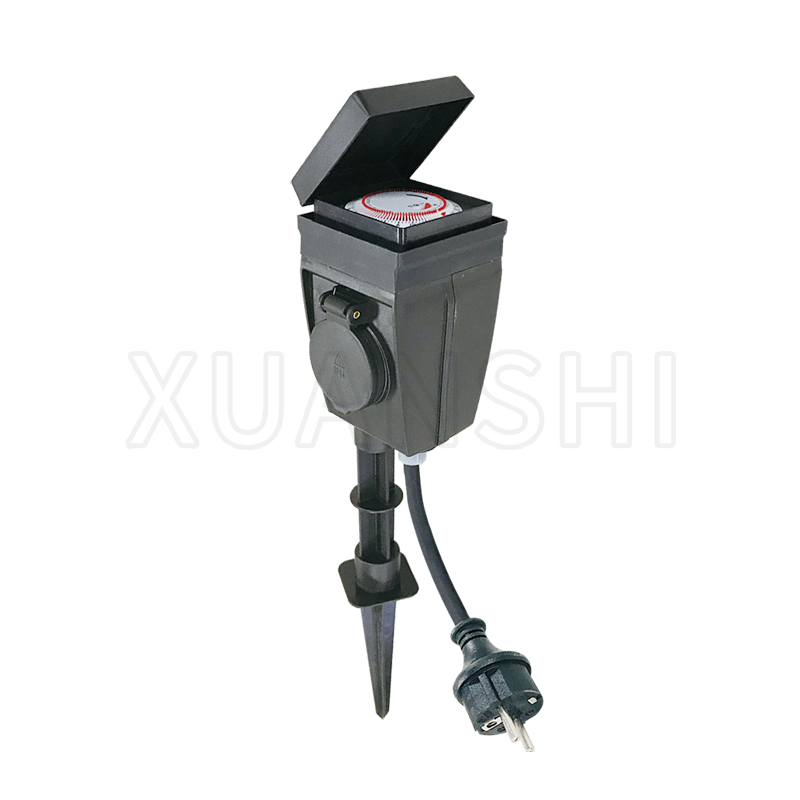The timer function on a European 2-way garden socket operates by allowing the user to set specific times for the connected devices to turn on and off automatically. Here's a detailed breakdown of how it typically works:
Setting the Current Time: The initial step in utilizing the timer function is to accurately set the current time on the socket. This is typically achieved through a dial or a digital interface. For mechanical timers, users will rotate the dial to align the current time with the indicator. For digital timers, the time is set using buttons to adjust the hours and minutes displayed on a screen. Ensuring the correct current time is crucial for the timer to execute the programmed schedules correctly.
Programming the Timer: Mechanical timers feature a 24-hour dial segmented into intervals (commonly 15 or 30 minutes). Users can set the on and off times by pushing or pulling these pins or segments. When the dial rotates, the pins engage or disengage the switch within the socket, turning the connected device on or off at the designated times. Digital timers offer more flexibility and precision. Users can program multiple on and off times by navigating through a menu using buttons. Each event is set by specifying the hour and minute, and some models allow different schedules for each day of the week. Digital timers often come with additional features, such as the ability to program complex schedules and cycle patterns.
Timer Modes: This mode allows the user to bypass the timer functionality, enabling the socket to function as a standard electrical outlet. This is useful when the timing schedule needs to be temporarily suspended. In Auto Mode, the socket operates according to the programmed schedule. This mode automates the power supply to connected devices, turning them on and off at the set times without manual intervention. Some advanced timers include a Random Mode. This mode varies the on and off times within a set range to simulate the presence of people. This feature can enhance security by creating the appearance that the property is occupied, deterring potential intruders.
Setting Individual Sockets: The key advantage of a 2-way garden socket with a timer is the ability to set independent schedules for each socket. This feature allows users to control two separate devices with distinct timing needs, providing greater flexibility in managing outdoor electrical equipment.
Overriding the Timer: Many timer sockets incorporate an override function. This function enables users to temporarily turn the socket on or off without altering the programmed schedule. This can be accomplished through a physical switch or a button on the device. The override function is particularly useful for unexpected changes in routine, ensuring that the user can manually control the socket when necessary.
Safety and Energy Efficiency: The timer function enhances safety and energy efficiency by preventing devices from running unnecessarily. By automating the on and off cycles, the timer ensures that lights, irrigation systems, and other equipment operate only when needed. This reduces energy consumption and minimizes the risk of electrical hazards associated with devices being left on for extended periods.
european 2 way garden socket with timer JL-3F,XS-XBD2
